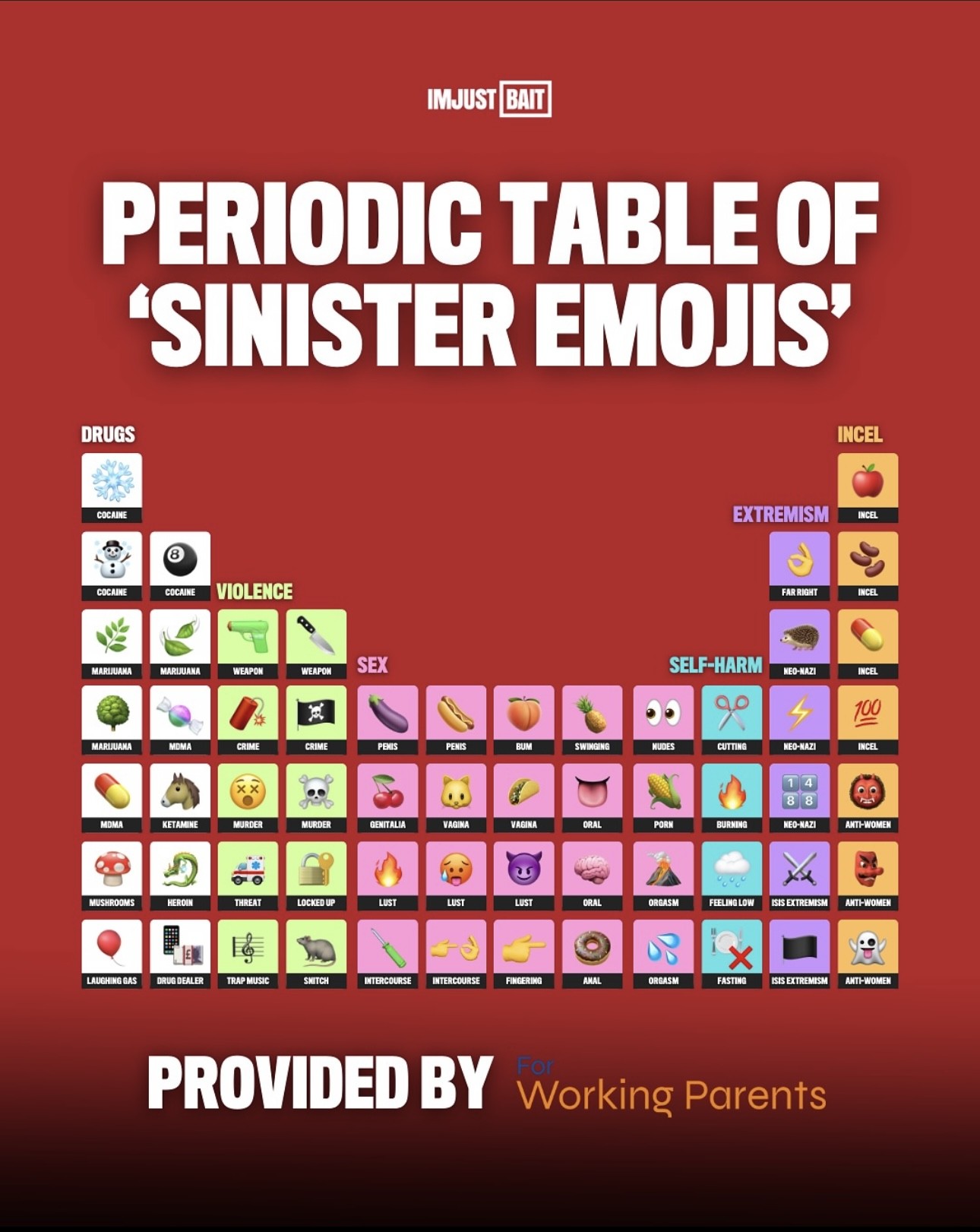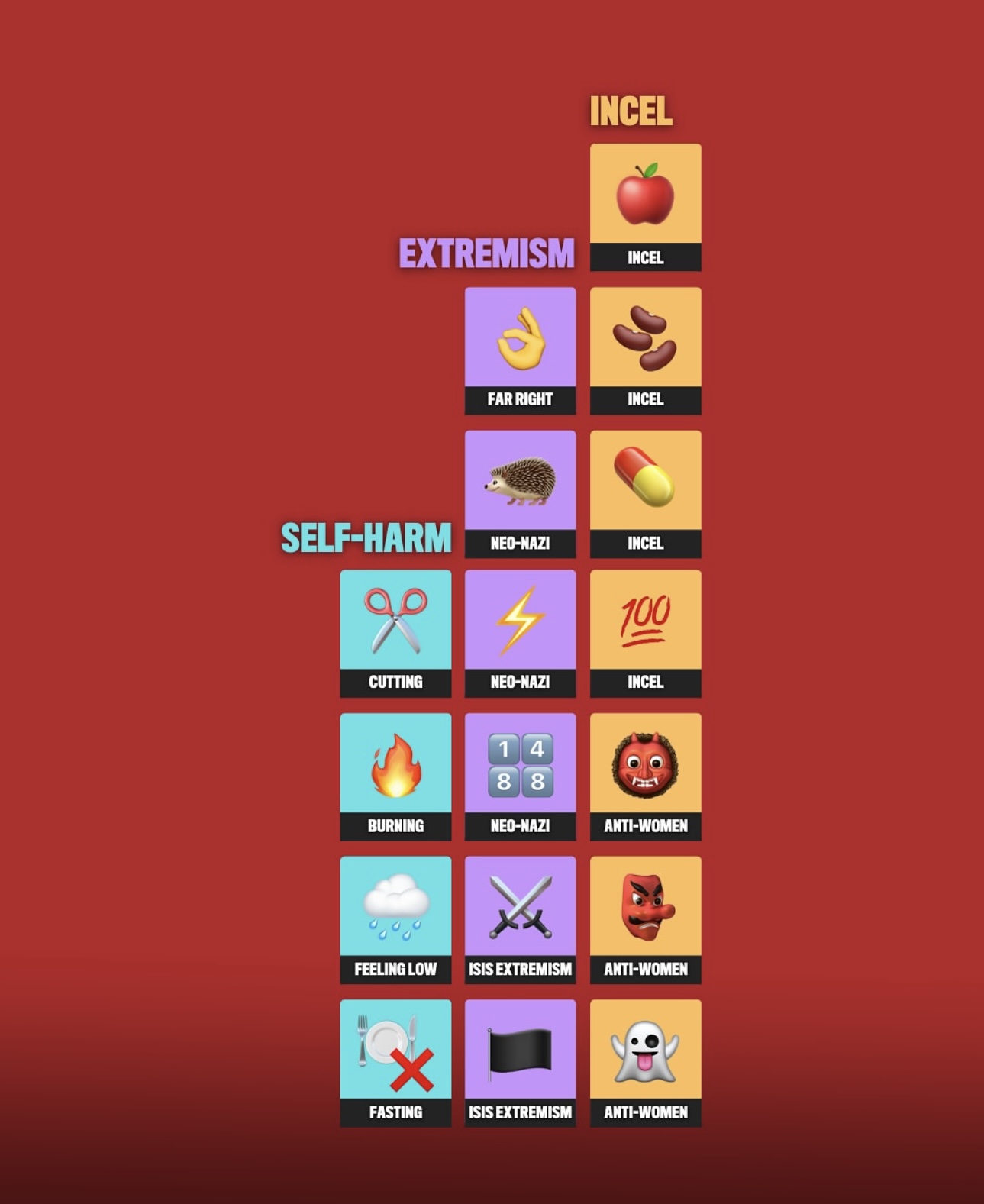Adolescence and Incels - terminology and links to resources

Dear Parents,
The new Netflix series, Adolescence, has sparked important conversations about online safety, particularly how easily children can hide their true intentions in everyday conversations. While the hidden meanings behind emojis used by young people can often be harmless, some may indicate risks such as extremism, drugs, sexual interactions, and bullying.
The series depicted the devastating consequences of harmful online interactions and highlighted the warning signs (in the form of emojis) that are easily missed by adults. This serves as a stark reminder of how much can go unnoticed, even when we are doing our best to stay vigilant.
To help you stay informed, we have shared with you a guide to emojis commonly used in harmful contexts. Being able to decode these symbols can help you spot potential risks early. However, it is crucial to remember that context matters. The use of an emoji does not automatically indicate a harmful conversation—the specific circumstances in which a symbol is used will reveal whether it is something that should spark concern.




Understanding the hidden meanings behind emojis can be most helpful when considered alongside other markers of risk. The language used by teenagers is constantly evolving, and the meanings of emojis can change from one month to the next. Therefore, it is useful to stay abreast of the latest slang, as it may offer signs of safeguarding risks.
By staying informed and vigilant, we can work together to ensure the safety and well-being of our children in the digital world.
Joseph Leckie Academy